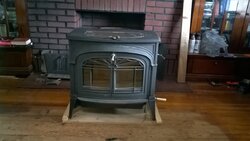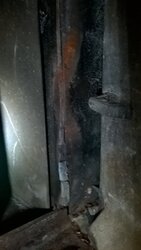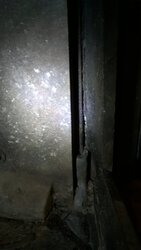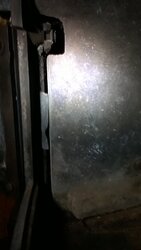I just got a new-to-me VC Encore Defiant model 2550.
Haven't fired it up yet.
I am new to woodstoves but very handy/capable so I am planning on making this one operable.
It clearly needs new gaskets (ordered online and on their way) for the doors, lower fireback, griddle... so I got the gasket kit for those.
The Refractory Chamber is not in bade shape except a few of the corners are a little crumbled/rounded off.
The Catalyst appears to be in decent shape, no damage or buildup, just faded looking.
My concern comes down to:
I don't know what the inside of this thing SHOULD look like with regard to what should be gasketed or not.
The Left and Right Inner Side pieces, the Outer Back, and a few other places have what appear to be mostly missing broken pieces of an old solidified sealant of some kind... it almost looks like old cast-iron plumbing when they used lead to seal joints. Based on the research I've done I'm guessing it may be the remnants of high-temp furnace cement?
Can anyone throw some input my way as to whether these pieces (at least the pieces I've specifically named) should be sealed or not? If so I'm hoping I can just wire brush the gaps and reapply some high-temp furnace cement.
The concept of the functionality of some of these pieces in the stove eludes me so I'm not sure what should be sealed and what should be left unsealed and what damage may be caused by firing it up if there are some gaps where there should not be.
I can upload pics of anything more specific upon request.
Thanks for your input!




Haven't fired it up yet.
I am new to woodstoves but very handy/capable so I am planning on making this one operable.
It clearly needs new gaskets (ordered online and on their way) for the doors, lower fireback, griddle... so I got the gasket kit for those.
The Refractory Chamber is not in bade shape except a few of the corners are a little crumbled/rounded off.
The Catalyst appears to be in decent shape, no damage or buildup, just faded looking.
My concern comes down to:
I don't know what the inside of this thing SHOULD look like with regard to what should be gasketed or not.
The Left and Right Inner Side pieces, the Outer Back, and a few other places have what appear to be mostly missing broken pieces of an old solidified sealant of some kind... it almost looks like old cast-iron plumbing when they used lead to seal joints. Based on the research I've done I'm guessing it may be the remnants of high-temp furnace cement?
Can anyone throw some input my way as to whether these pieces (at least the pieces I've specifically named) should be sealed or not? If so I'm hoping I can just wire brush the gaps and reapply some high-temp furnace cement.
The concept of the functionality of some of these pieces in the stove eludes me so I'm not sure what should be sealed and what should be left unsealed and what damage may be caused by firing it up if there are some gaps where there should not be.
I can upload pics of anything more specific upon request.
Thanks for your input!




Last edited by a moderator:

